I’m not sure why our tour today is called the Golden Circle Tour, but it is, so there! It was an all-day tour and I learned as much about geography today alone as I did in a full semester when I was in college.
To appreciate Iceland, the first thing you have to know is that it is the second newest inhabited land mass on the planet. Only New Zealand is newer. Iceland was formed by shield volcanoes. These are volcanoes that erupted under the “shield” of the Ice Age glaciers during warm periods. Instead of building a cone, the weight of the glaciers forced the lava to spread out. The landscape in most places we saw looks like miniature moguls for skiing.
The second thing you need to know about Iceland is that the North American and the Eurasian tectonic plates meet in Iceland. It is the only place in the world where the Mid-Atlantic Ridge can be seen on land and the effects of two major plates drifting apart can be easily observed. The North American plate is rising, the Eurasian plate is dropping, and the two are moving apart at a rate of about two centimeters per year. The area between the plates is called the Rift Zone. The changes in the land are happening so rapidly, they are easily observed over a period of just a few years. Iceland must be heaven on earth for geologists!
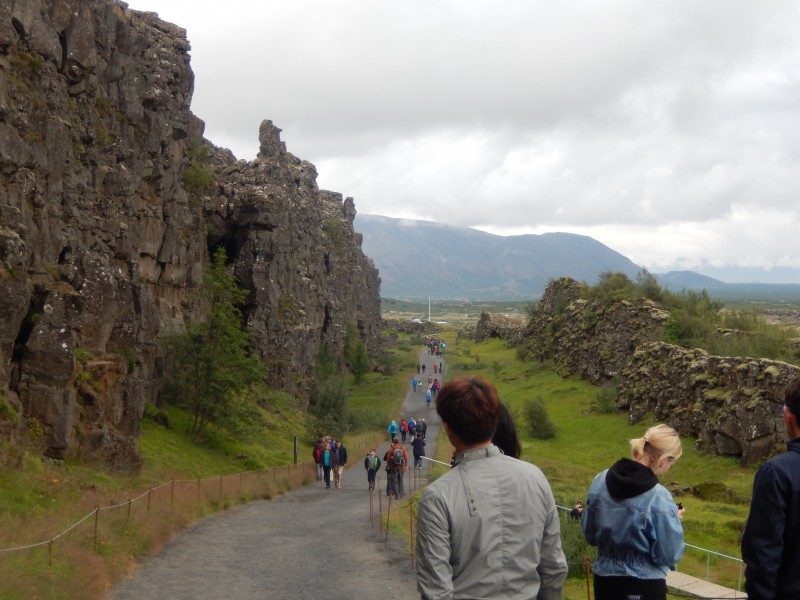
The rising North American plate is on the left; the dropping Eurasian plate is on the right. They are moving apart.
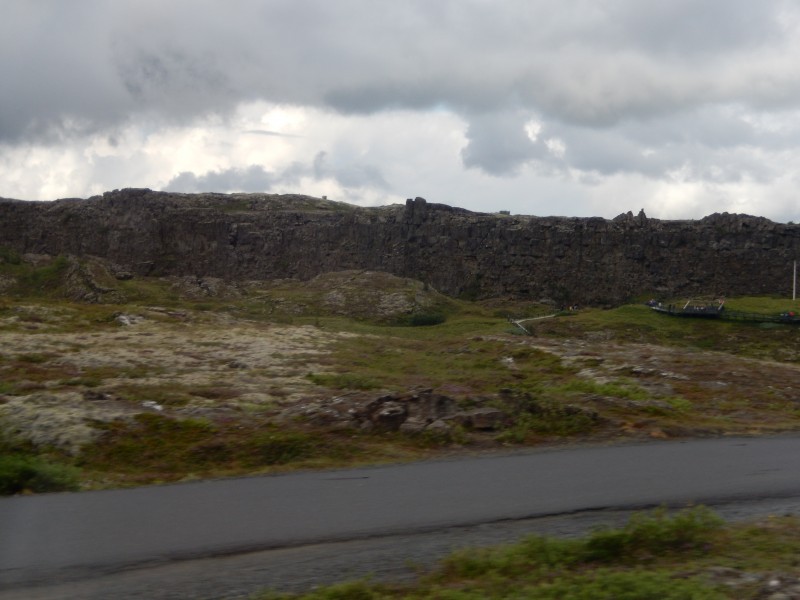
The rising North American ridge.
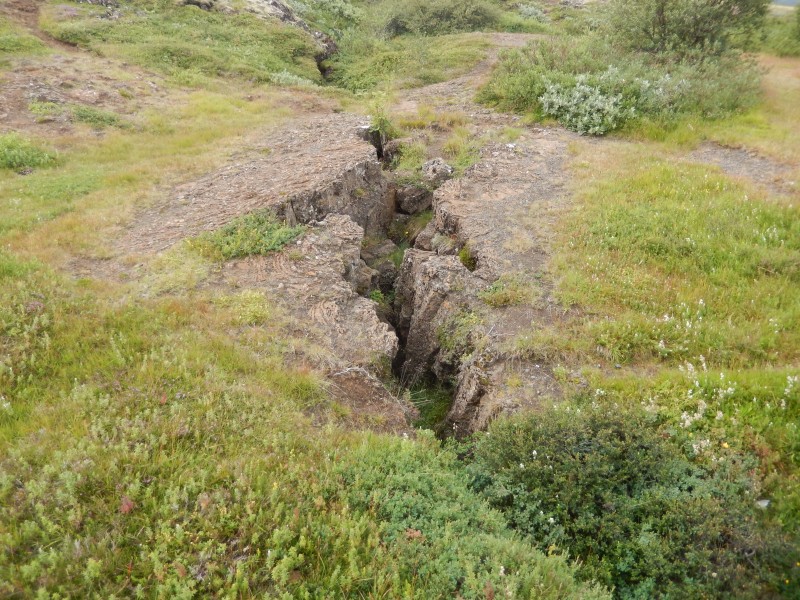
Everywhere we went, there were signs of the tectonic plates moving apart and rising/falling.
I expected Iceland to be similar to Yellowstone. While there are similarities (both have hot springs and geysers), each is unique. Iceland’s ground is very hot. There are places where the dead cannot be buried because the bodies would literally be boiled. Icelanders heat their homes with hot water. You don’t have to go very deep to find 300-degree water. It is carried in pipes above ground, and swimming pools and hot tubs abound–nearly all outdoors. They are used year-round and provide nice, warm venues for watching the northern lights. At our lunch on the Golden Circle Tour, we ate at a restaurant in the relatively small geyser area. Geyser water and geyser bread were on the menu. The bread is buried in the ground and removed after 24 hours. It tasted just like regular bread, but it’s hard to imagine the earth being warm enough to bake bread.
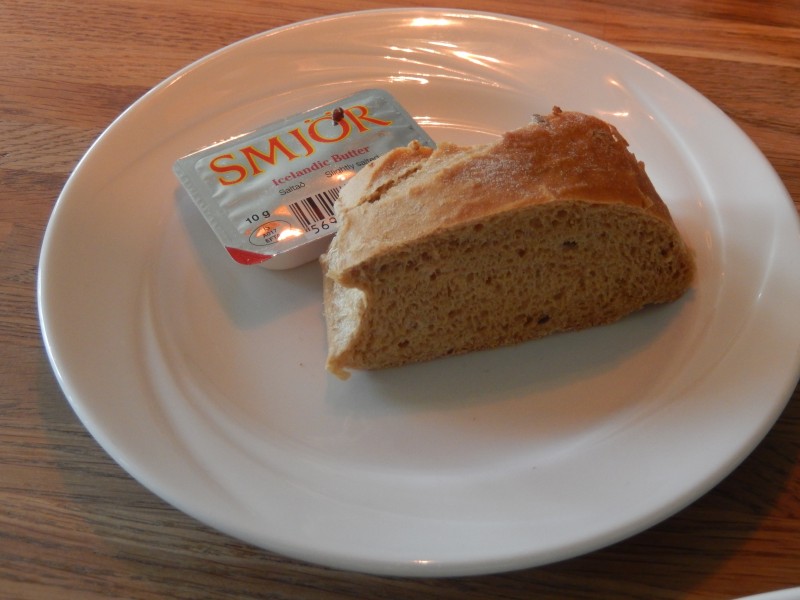
Geyser bread baked in the hot ground.
We saw two especially interesting geysers. One is called the weather forecasting geyser. On a clear day, the water cannot be seen in this geyser, but when the air pressure drops, the water rises. If you can see the water, it’s going to rain. (Based on our experience in Iceland and the other northern countries we’ve visited, you can probably see the water most days.)
The other interesting geyser erupts every 5-7 minutes. It’s not as big as Old Faithful, but you don’t have to wait long to witness several eruptions. We were standing right at the ropes for one eruption. We could tell the geyser was getting ready to erupt because the water in the basin started sloshing back and forth. When it erupted, a huge bubble rose out of the ground and then burst into the geyser flume. The bubble lasted only a fraction of a second, but it was amazing to see it rise several feet out of the ground and then explode. Wow!
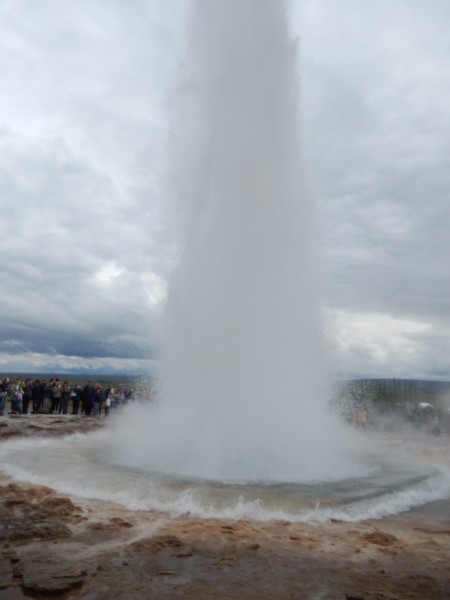
You can see the splash of the water from the burst bubble.
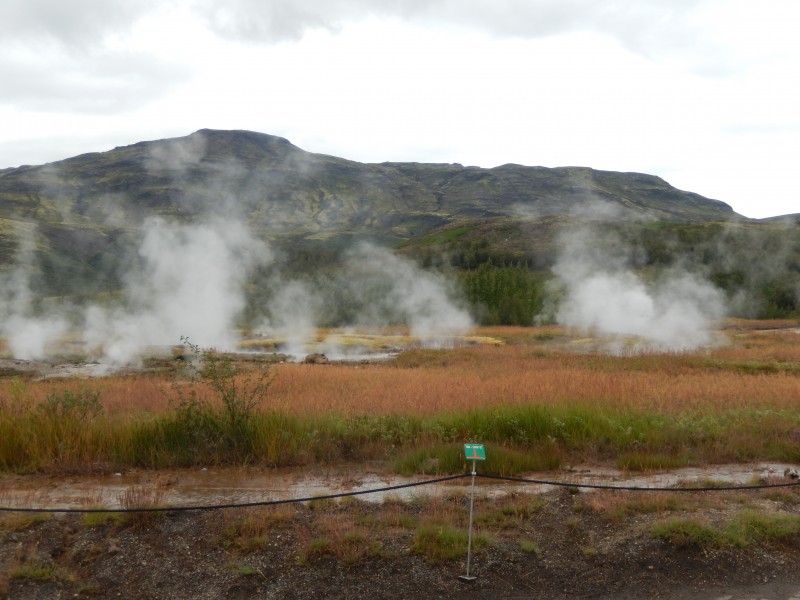
A geyser field we walked through.

Don’t stop before you read the last line. A tourist with a drone sent the drone over the dangerous ground to take pictures.
One of our “comfort stops” was at a small shopping mall. When they were building the mall, a rift in the earth was discovered. Instead of changing the site, they built the mall over the rift, strung red lights over the bottom of it, and covered it with glass. The mall includes a museum-like exhibit all along the rift. It was very interesting and definitely not like any mall I’ve seen before.
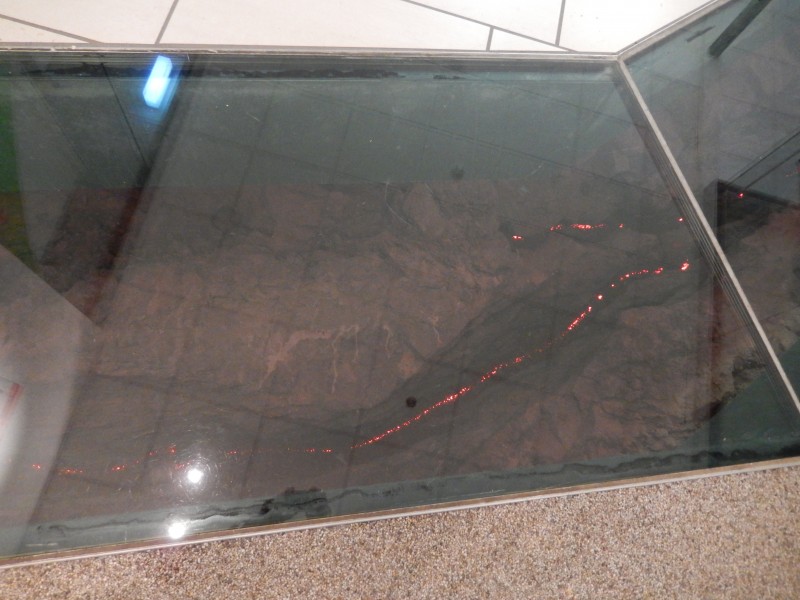
Separating tectonic plates beneath this shopping mall.
Only the birch tree is native to Iceland, so trees have been imported from other northern locales, including Alaska. Forests have been planted and Iceland expects to be timber self-reliant within thirty years. Still, trees don’t grow overly tall this far north, so there is a saying that if you’re lost in an Icelandic forest, stand up.
Fishing, especially cod, used to be the main source of revenue for Iceland, but tourism has taken its place and is now Iceland’s greatest source of income. Another major source of income is the production of aluminum. The bauxite is imported, but the abundant and inexpensive hydropower and geothermal energy greatly offset the cost of the bauxite. Aluminum smelting, a growing industry, is a topic of debate in the country among environmentalists and economists.
Most of the landscape we saw looked otherworldly. Over time, the lava becomes soil and can be farmed, but there is relatively little farmland, so food prices are very high. Ted and I had dinner at a local restaurant that featured a buffet and we spent over $100 on the meal–far more than an equivalent meal would have cost in the U.S. On another evening, we went to a local restaurant with two other couples. A plate of spaghetti with a glass of wine cost $80 for the two of us. Horses are numerous in Iceland for recreation and for food. They are the equivalent of cattle in the U.S. Horse beef and foal are on most menus. Although we were told horse beef is better than cow beef, we couldn’t bring ourselves to order the roast foal.
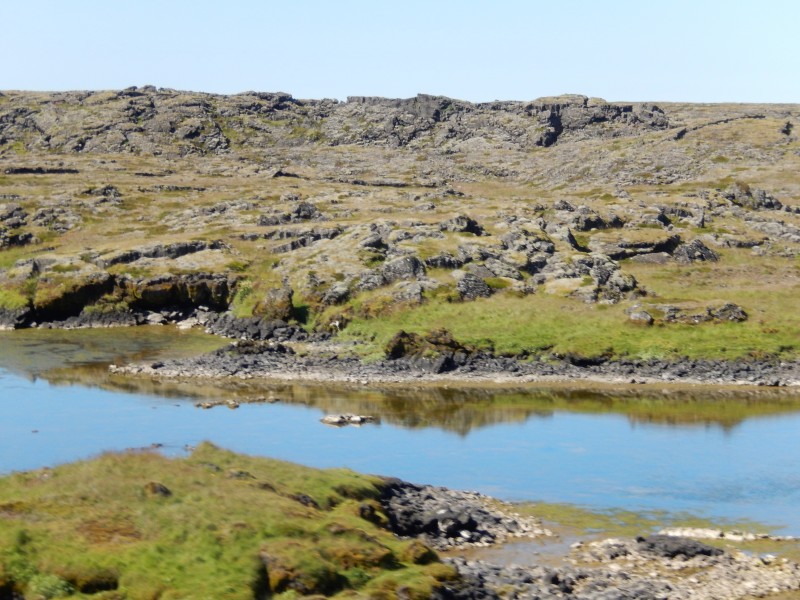
This ground is lava and it’s rising, dropping, and moving apart everywhere you look.
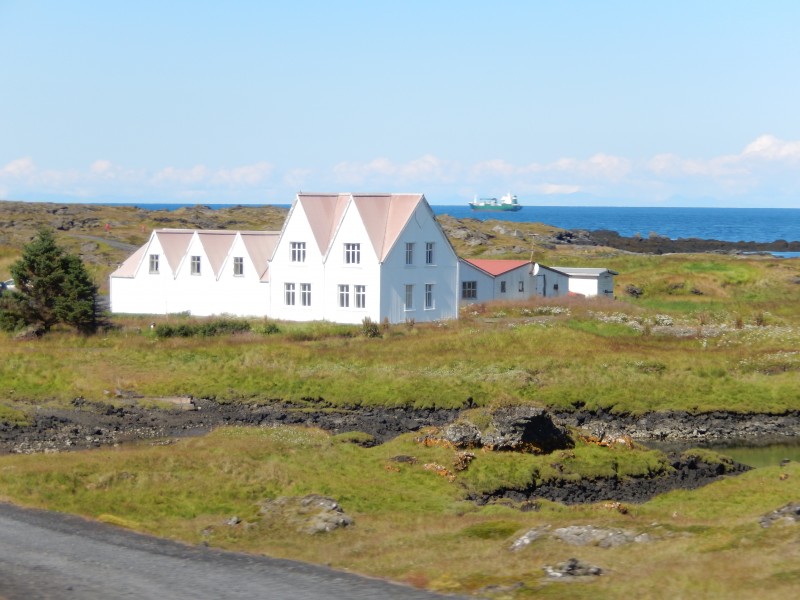
Even in this pretty setting, you can see there is very little topsoil and the ground is moving.